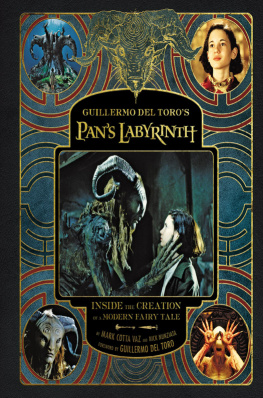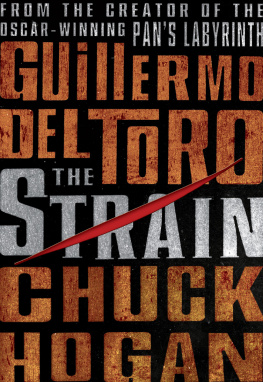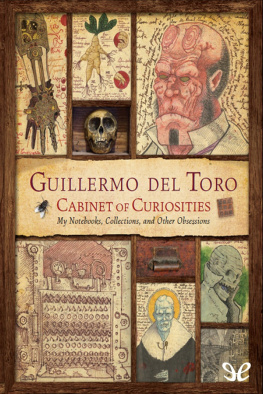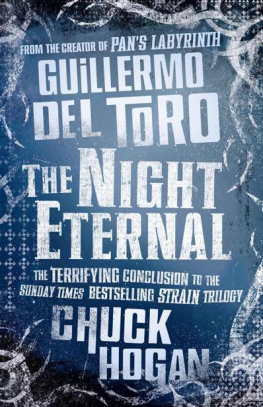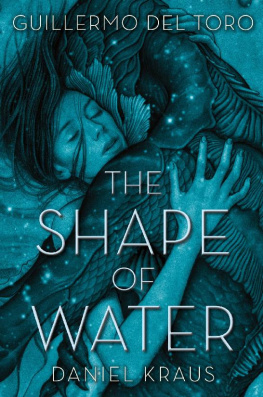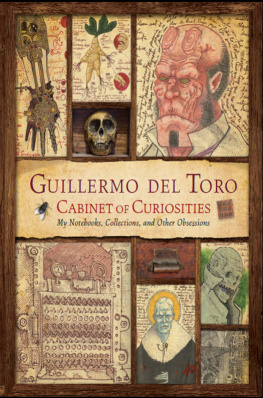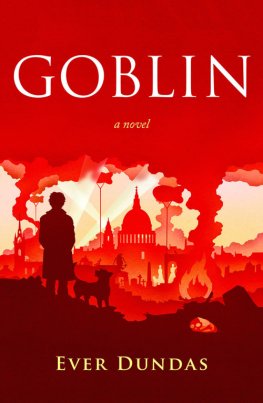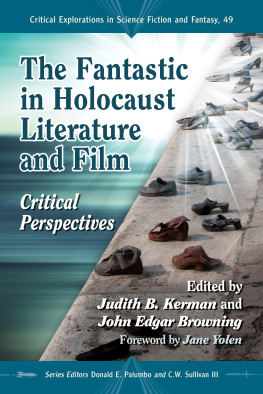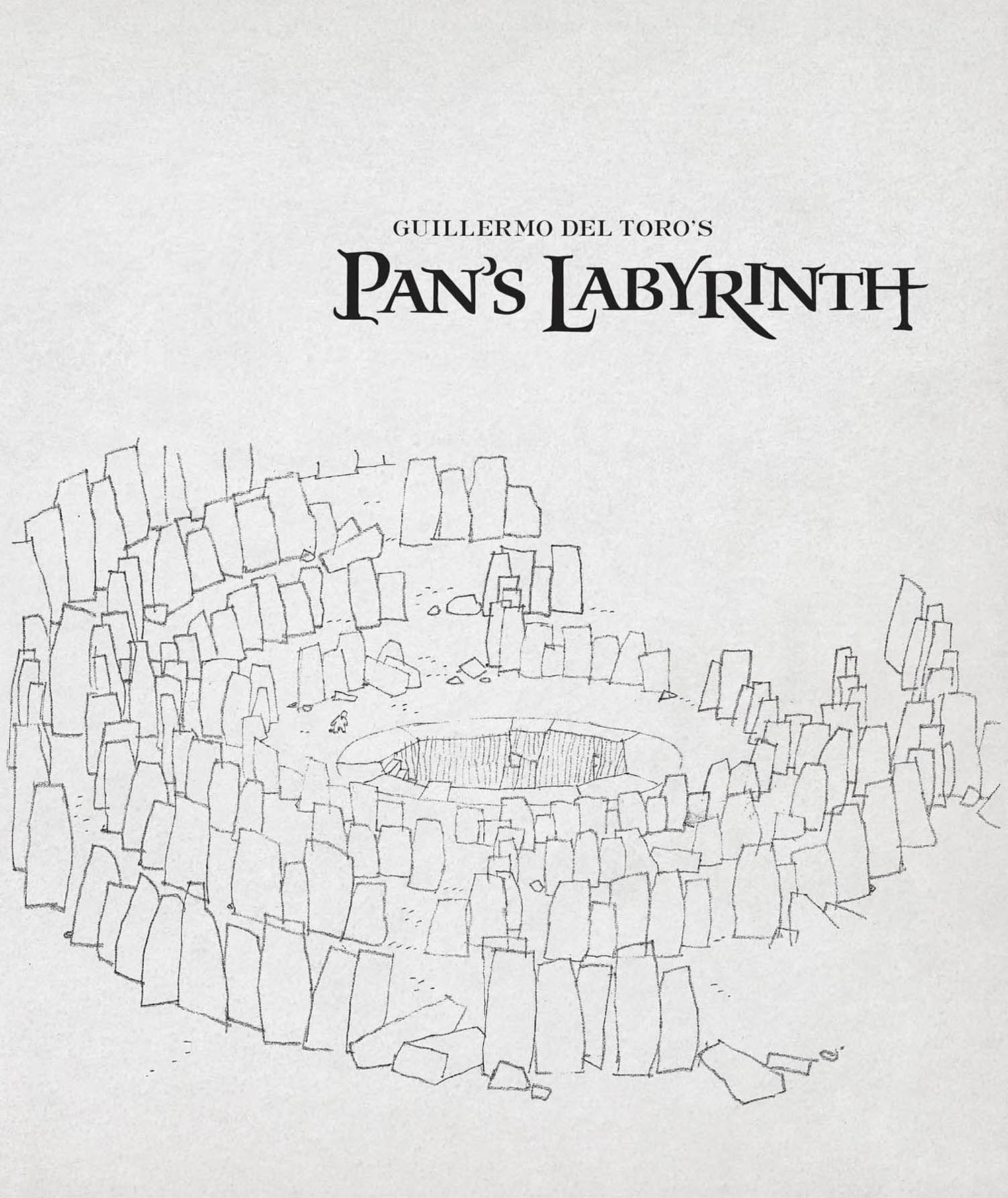
Labyrinth conceptual art by Carlos Gimnez.

Young Ofelia stands on the threshold of the ancient labyrinth.

Illustration from the Book of Crossroads by Esther Gili, calligraphy by Maria Luisa Gili.
The labyrinth is a primordial symbol. It can mean so many things, culturally, depending on where you find it. But the main thing for me is that, unlike a maze, a labyrinth is actually a constant transit.... Its about finding, not losing, your way. GUILLERMO DEL TORO
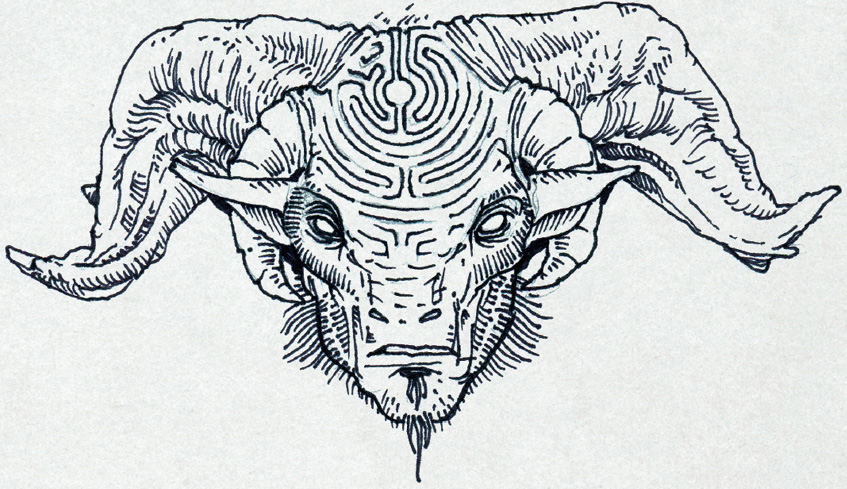
Faun head art by Ral Monge.

Conceptual design by Sergio Sandoval of the kingdom of the underworld.
CONTENTS
Guide
FOREWORD BY
GUILLERMO DEL TORO
SO, HERE WE AREten years after its releasestill talking about this movie.
And I am incredibly thankful for that.
In my estimation, Pans Labyrinth was the second most painful movie to make (the first was Mimic). But it is also one of the three I love the mostthe others are The Devils Backbone and Crimson Peak.
Obvious to everyone but me, we were overreaching and under-budgeted. It was, no doubt, the wrong Mexico/Spain co-production to attempt at that particular time. Catalonian horror was fruitful, yes, but always viewed as a sensibly budgeted exercise. And a big-budget movie like The Others always demanded an international cast and had to be shot in English. Mexico offered a limited amount of money for co-production, and we had to fill key positions and achieve a postproduction process that (in Mexico, at the time) was uncharted territory. Why do it, then?
All of it goes back to one nice dinner with Alfonso Cuarn in his London home. We were both in a sort of exile and trying to find our way into films that pushed us forth. During the course of the evening, I told him the story of Pans (start to finish) with exacting attention to detail. We felt confident and charged, but there was really no reason to. Alfonso had embarked on Children of Men and made it clear that he would be on that journey at the same time I was shooting. Our producing partner, Bertha Navarro, and I would have to do the heavy lifting.
But it is a fact: Lost causes are the only ones worth fighting for.
Ive gone on record in other books and audio commentaries about how much adversity we faced (crew mutiny, backbreaking giant frog puppets, forest fires, loss of entire sets, a fiendish plot by rival producers bent on sabotage, and much more).
I was mercilessly pushing everyone to the limit, but I carried the weight of the worldthis fantastic worldon my shoulders. I was sleeping less than three hours a night and was losing three pounds a week (I have regained them all, thank you) due to the enormous stress. At a very early point in the production, I forfeited my salary and my points and just closed my eyes and worked harder than I have ever worked.
But amidst the pain, this was also a time of prodigious love, emotional rewards, and changes. Without my realizing it, this movie changed me and my life forever.
I had already made a movie I was immensely proud ofThe Devils Backbonewhich prompted me to embark on this companion piece as I called it. A sister movie for the boys adventure I had shot. They are both movies about innocence and war and about infinite melancholy and loss. But Pans was more intricate and ambitious from a technical and visual standpoint. You see, before taking on Pans, I had the chance to experiment with a fine degree of visual construction in Hellboy and had learned to fuse digital effects and makeup in Blade II. Now this project allowed me to attempt a new kind of taleone that was ambitious but still delivered within a restrictive European budget. The budget was 14 million Euros (around 19 million US dollars at the time) and hardly sufficient for my ambitions: I wanted to build every single set, fabricate most of the props and furniture, and design and fabricate most of the wardrobe. On top of that, I wanted to deliver a myriad of creatures that were entirely uncommon in Mexican or Spanish cinema.
In summation: a movie that should not be attempted. If you listen to reason, that is...
A budget is a state of mind. So, the route we took was fraught with danger. Bertha Navarro suggested a young, unproven production designer: Eugenio Caballero. I agreed to go with Eugenio mostly because I saw great promise, yes, but even greater commitment. In his eyes burned the death wish of the novicethe limitless hunger you have when you dont know boundaries or budget.
I supported Eugenio: first, by placing my office amidst the art department so I could torture him daily, and second, by hiring the very bestand the most loyalset construction company in Spain, Moya Construcciones.
I insisted on having DDT Efectos Especiales deliver the makeup effects, because I had watched them grow from infancy. Little did I know that this was to be their adolescence, and we would go through their growing pains together.
The wardrobe was to be designed by Lala Huete, whom I deem an absolute genius and one of the most brilliant and unconditionally dedicated collaborators I have ever had. She was going through the most dramatic period of her life and she never surrendered. In my opinion, the wardrobe becomes the set for the actors face and body; it tells you their story before they open their mouth, and Lala instinctively understood this.
In cinematography, I had my compadre Guillermo Navarro, with whom I had a preternatural shorthand communication and whose sense of light I adore. Guillermo brought with him two of his key collaborators: David Lee, the most prodigious gaffer, and Rick Stribling, his 4x4, all-terrain grip man. We would face adversity together.
I storyboarded, designed, and planned everything to a T and then marched straight into hell.
One vital bit of information needed before undertaking this journey was that a labyrinth is a pilgrimage, not a maze. Not a place where you get lost but a place where, after many twists and turns and moments of despair, you are found.
This particular fairy tale contains another moral: the idea that, sometimes, out of great but secret sacrifices, changes flow that ripple through the world.
The military skirmishes chronicled in the film are insignificant (most military activity of that time is lost to history). Repression was waged in Spain under the radar. Men were shot, rebellion suffocated, and buildings burned all during a time of official peace. The peace of the winners. So, nothe guerilla army didnt win the war. But, as in the film, it did win a few battles. And, most importantly, it never gave up.
All those anonymous men, shot by the side of the road, paved the way for change and freedom. And, in the same way, Ofelia gave it all for small changes in the world: A baby lives, free of the shadow of his father; a small flower blooms in a dry tree. But these minute changes are not insignificant. They are a part of the chain of good. Becauseif I may quote myselfin the absence of light, darkness prevails.
Next page
